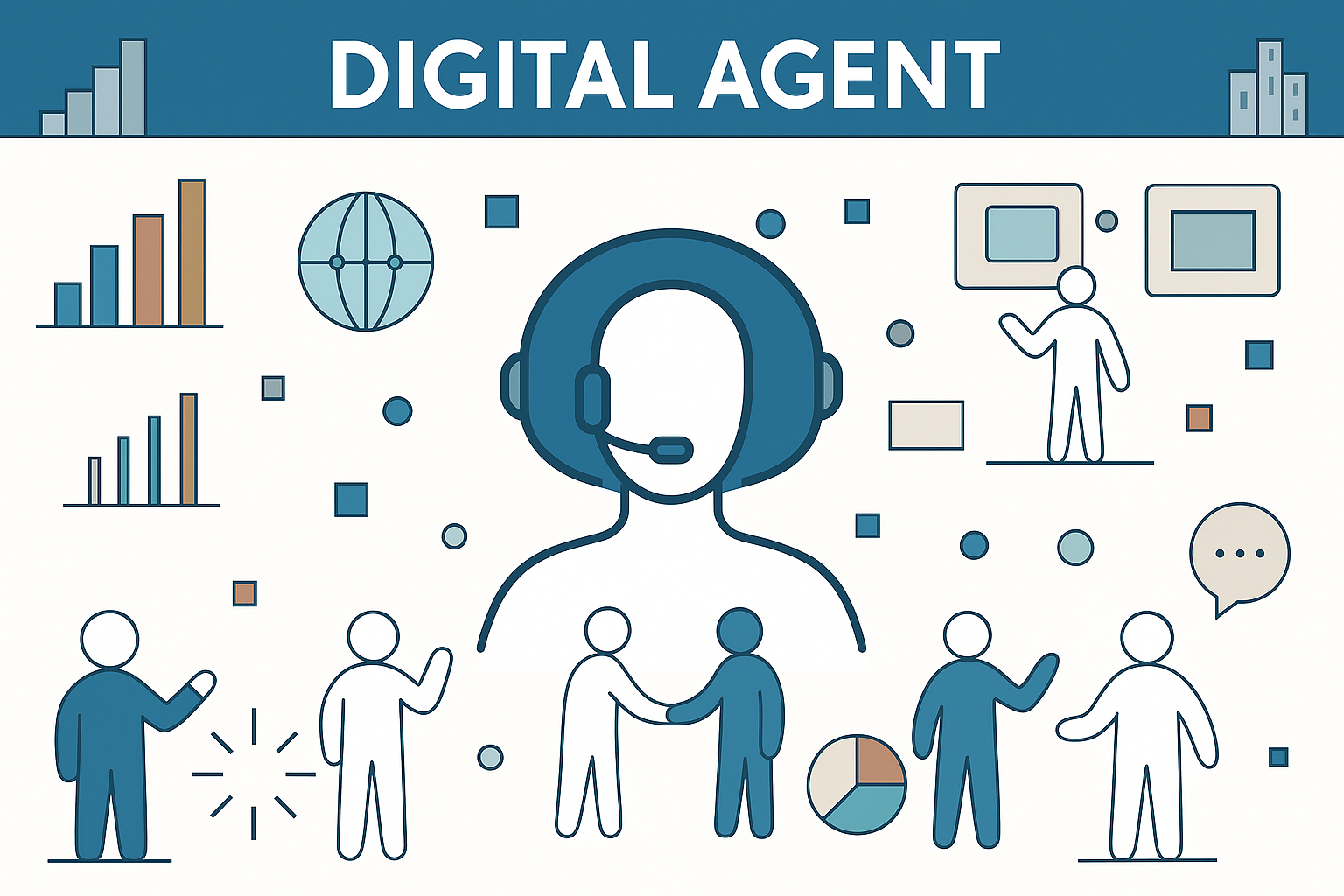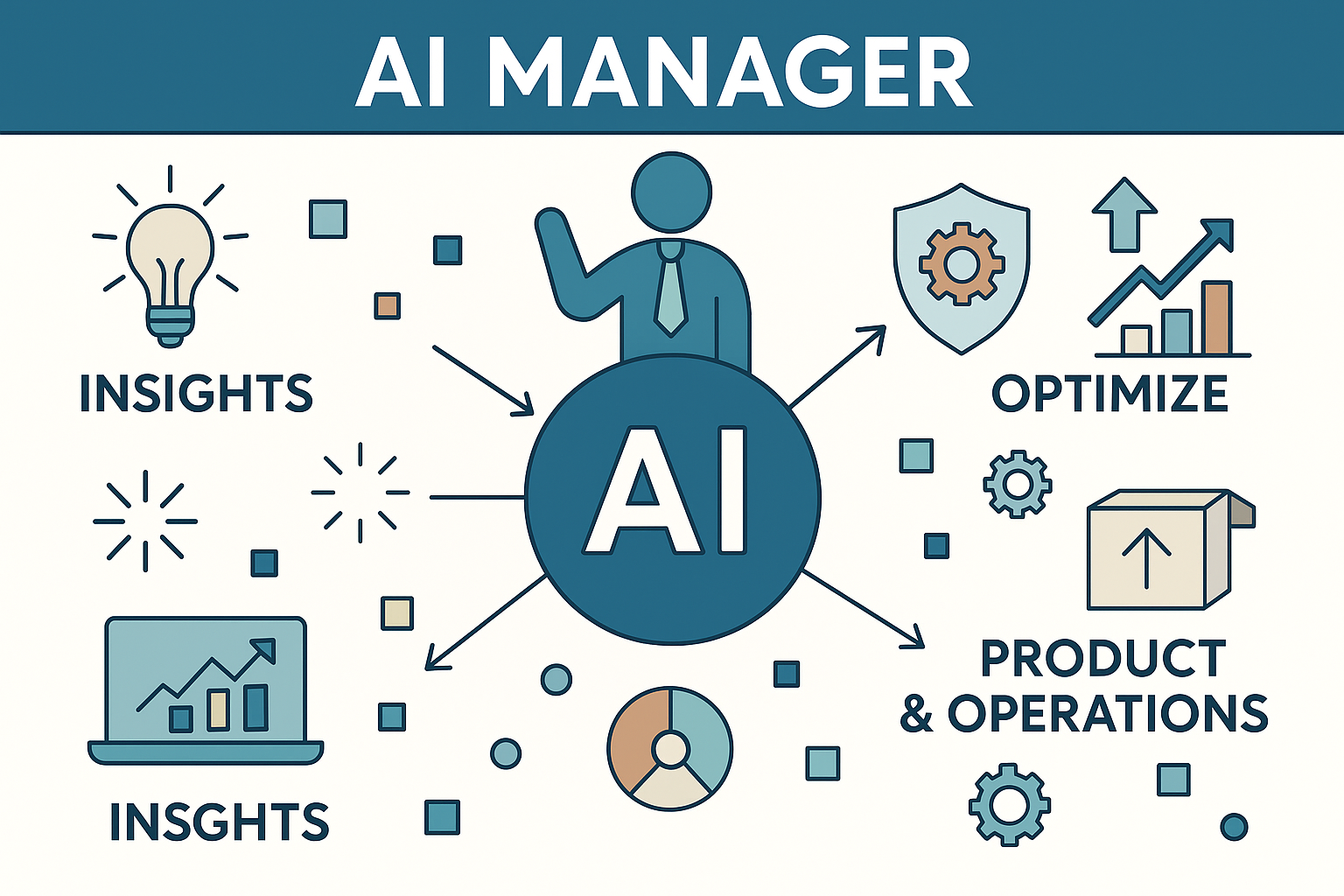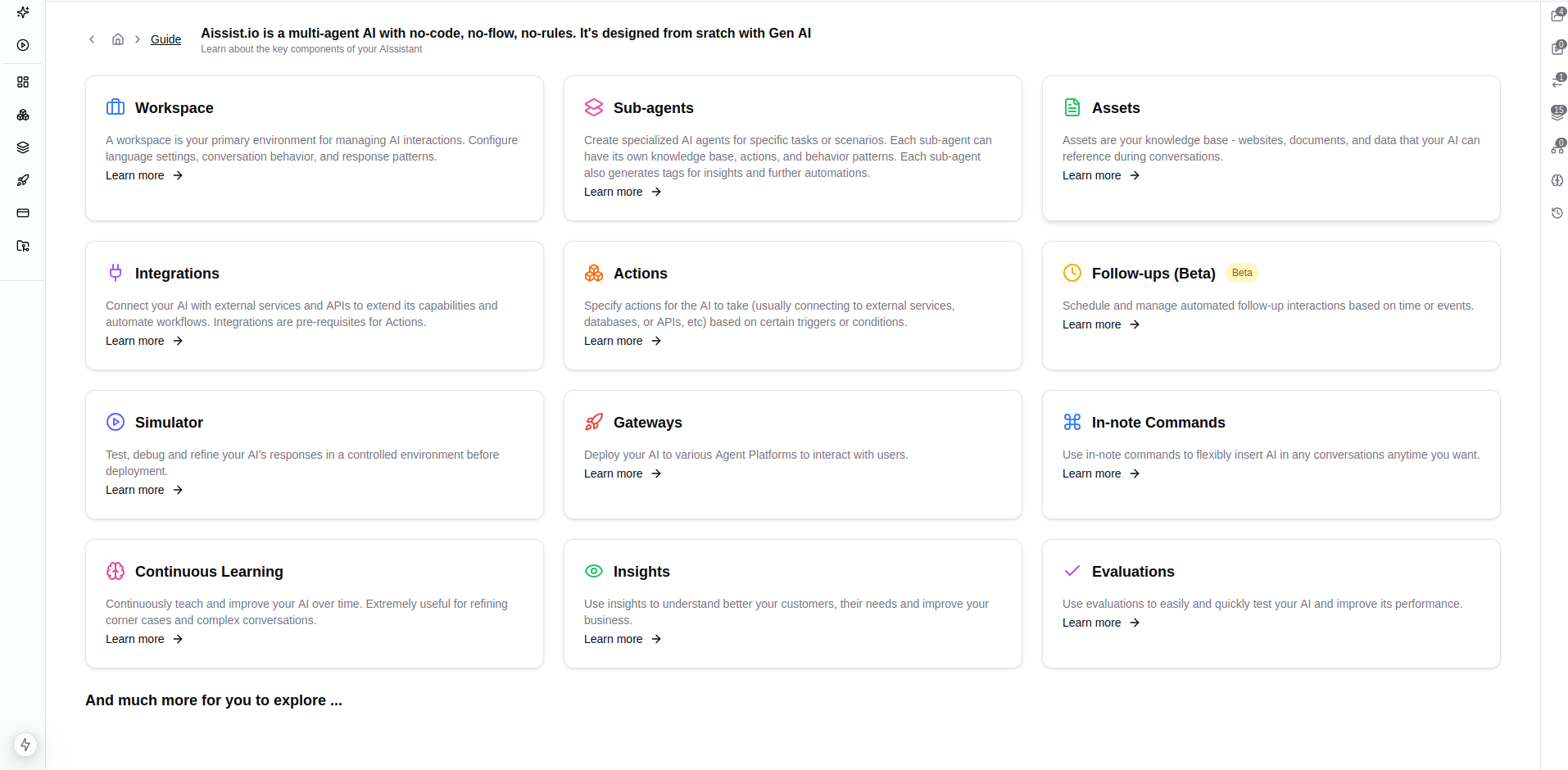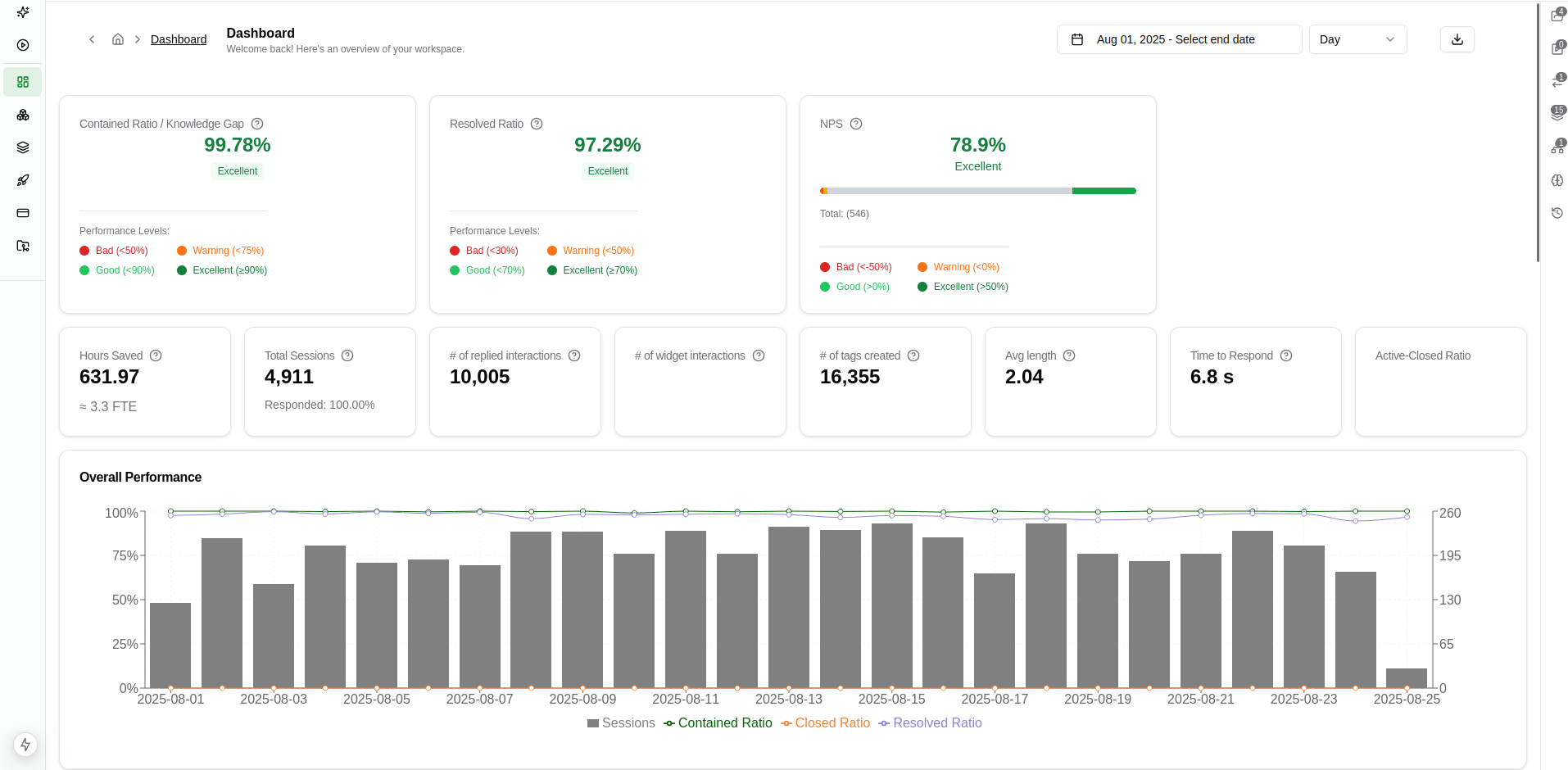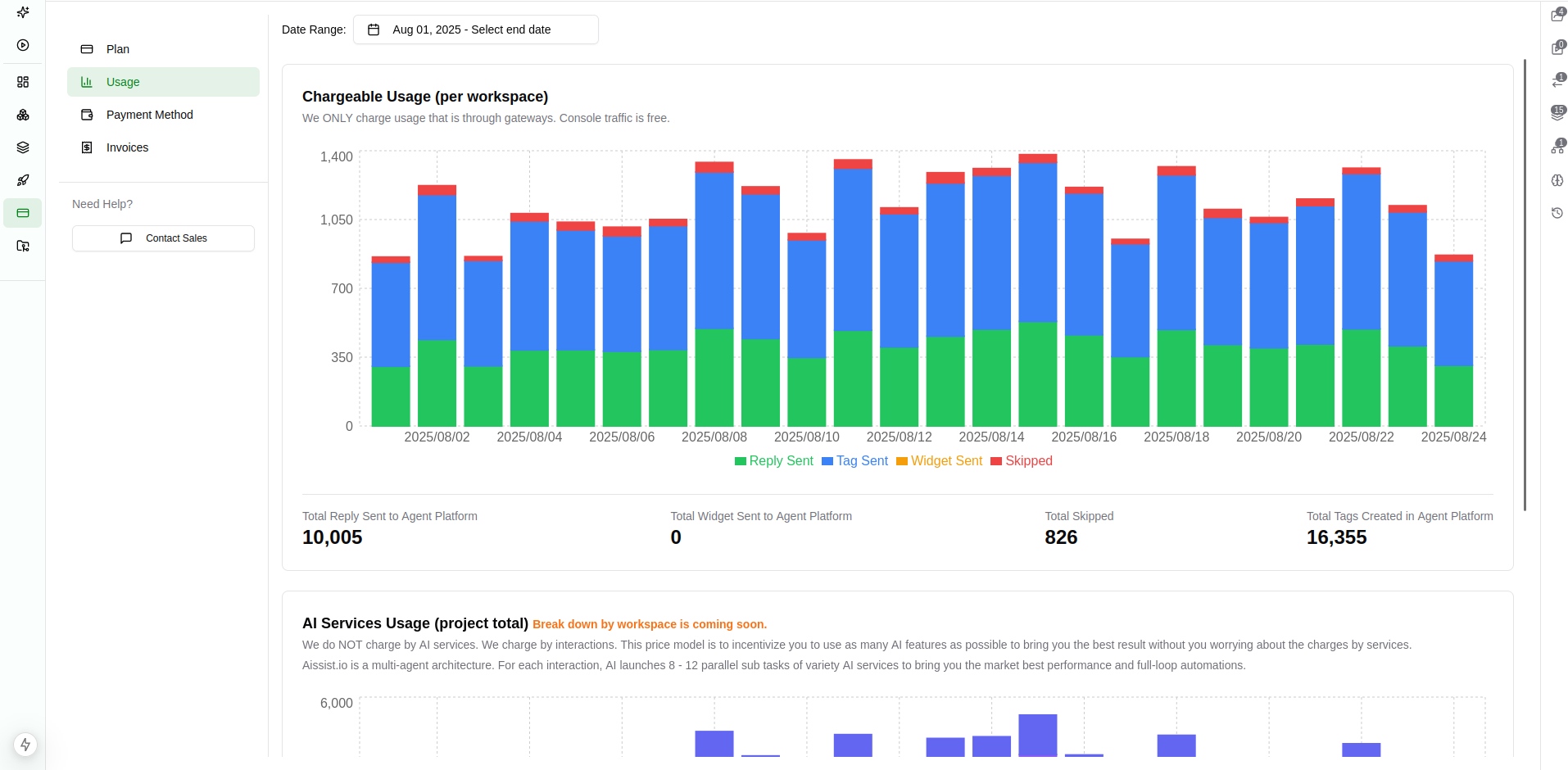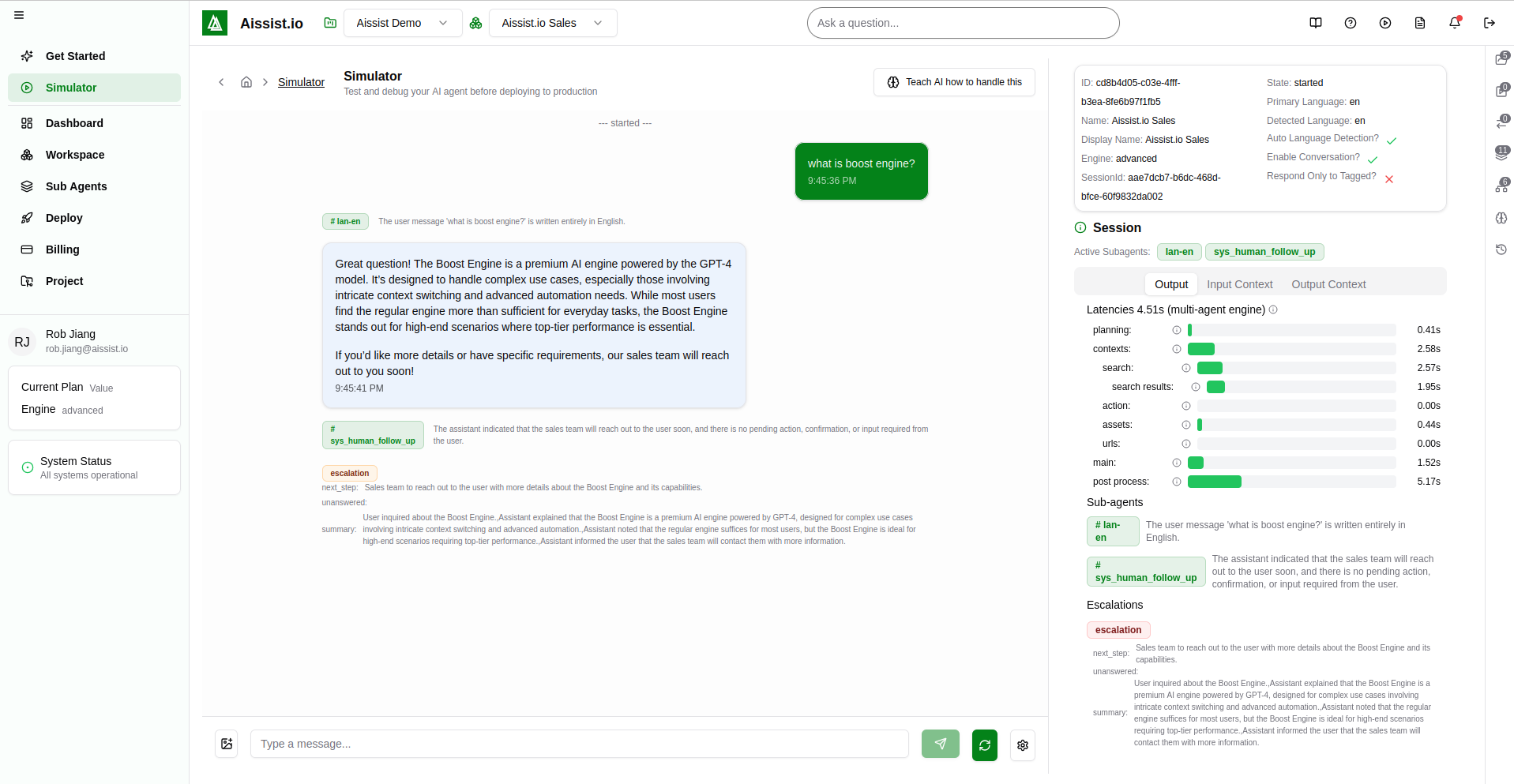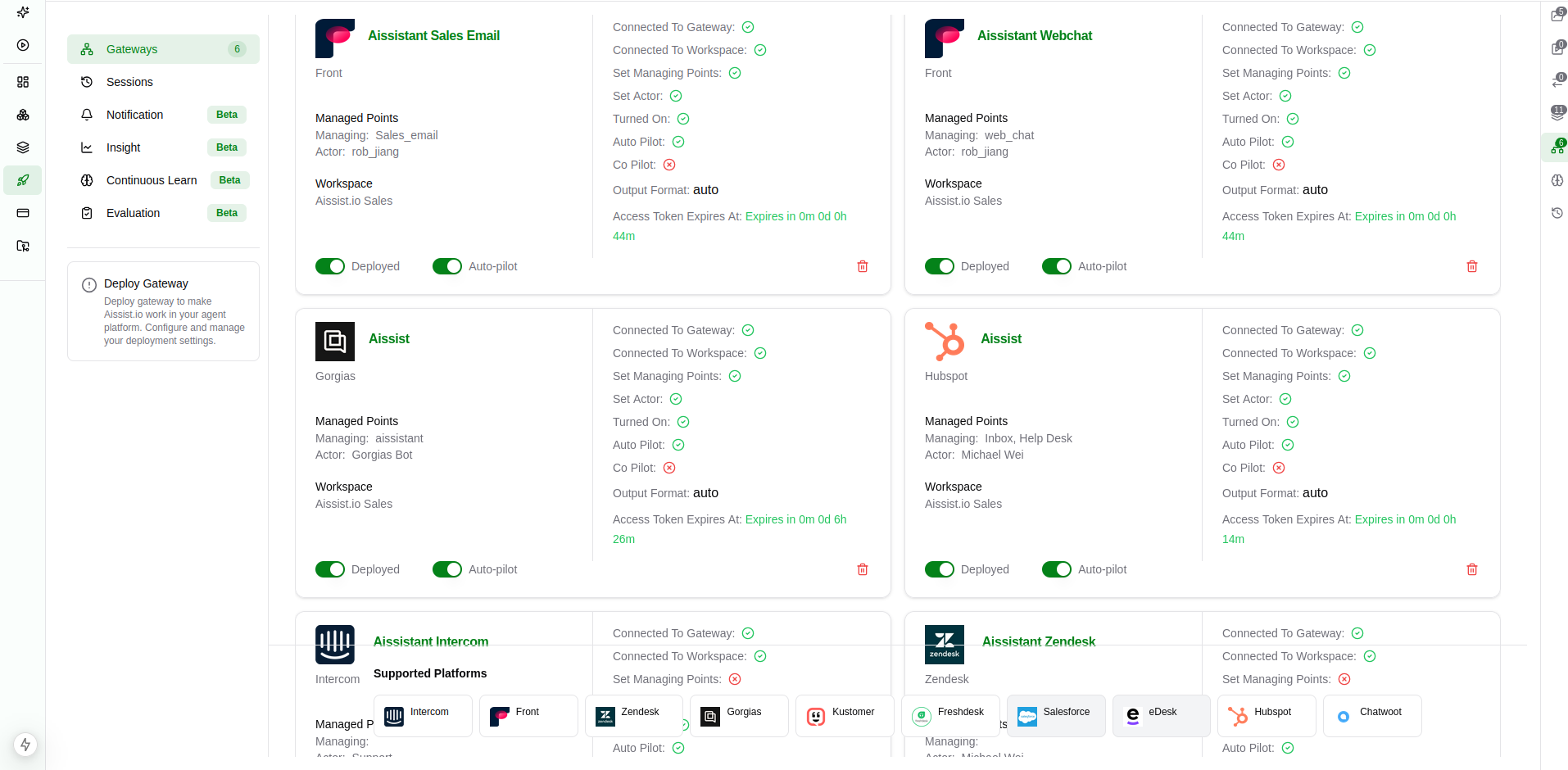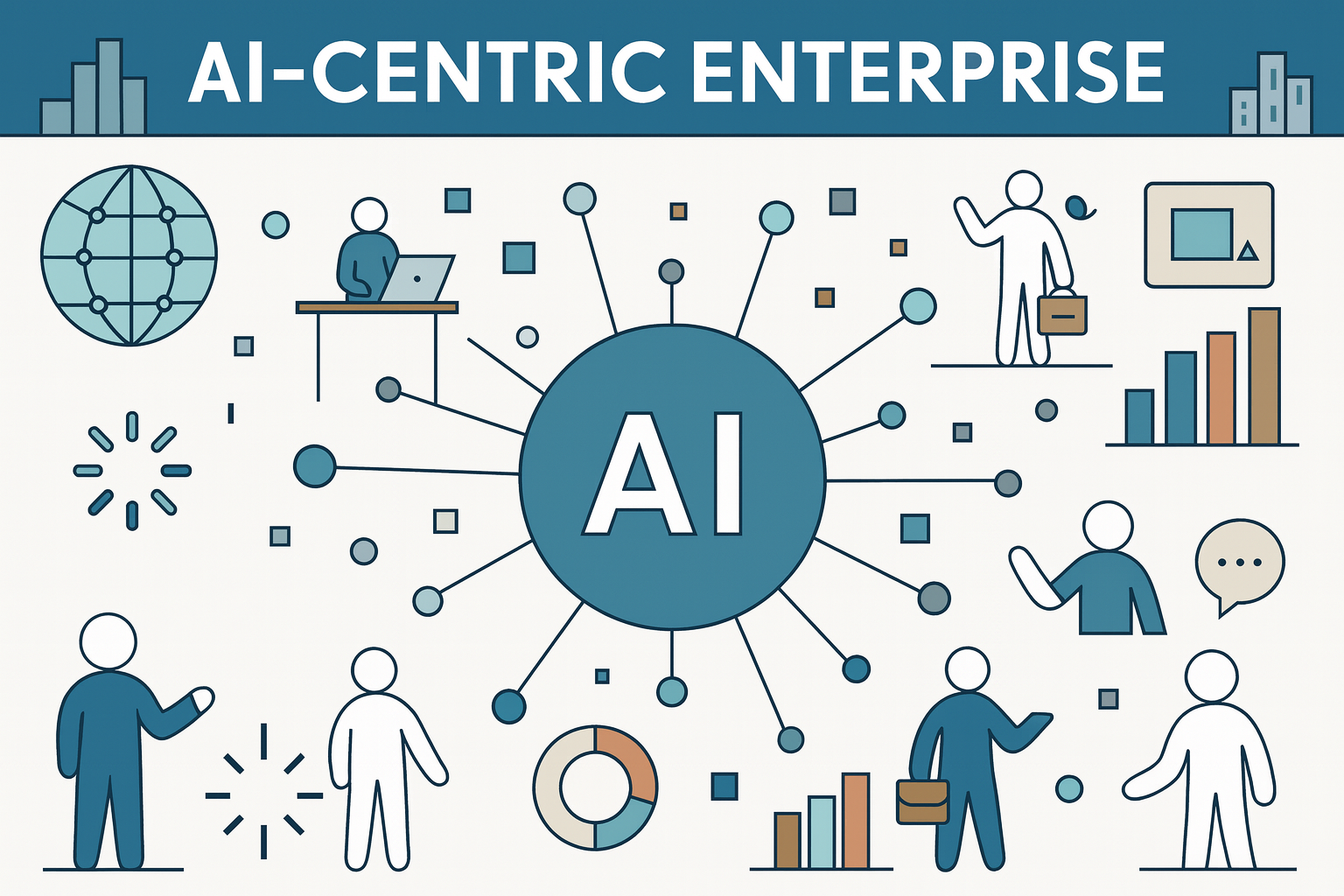
I still remember the moment vividly — November 2022, when GPT-3.5 was released. I opened the demo, ran a few tests, and within minutes realized something profound: This was the moment AI crossed the threshold from novelty to reliability.
For years I had worked with enterprise AI — intent classifiers, rule engines, dialogue flows, NLU pipelines — and all of them, no matter how advanced, shared a fatal flaw: they were brittle. They broke easily, scaled hard, misunderstood users, and required armies of engineers to maintain. But GPT-3.5 was different. It didn’t babble nonsense or produce “trash words.” For the first time, I could imagine AI not as a tool we used, but as a colleague we trusted.
That realization became the seed of Aissist.io.
The Beginning — A Prediction and a Promise
When I founded Aissist.io, I made a bold prediction: “By 2028, 80% of businesses will rely on AI as a core part of their operations.”
Two years later, I still hold that belief — and everything we’ve built since has been toward making that vision real.
The journey began in the early age of human-centric automation, where AI acted as an assistant (also the source of our name Aissist), a shadow quietly handling routine tasks. But we are now witnessing the early signs of the next transformation — one as deep and structural as the PC revolution, the mobile wave, and the SaaS era combined. The coming shift is from human-centric to AI-centric.
The Next Transformation — From Human-Centric to AI-Centric
In the AI-centric world, work will be organized around AI, not humans. Processes will be redesigned so AI can perform them efficiently. Data will be structured and implemented for AI to consume. Tools will be built for AI to operate — with humans managing, guiding, and amplifying their impact.
Just as spreadsheets reshaped finance and browsers reshaped communication, AI-centric systems will reshape organizations from the ground up — from workflows to org charts.
At Aissist.io, we’ve charted a three-stage journey toward this future — and today, we stand at the pivotal point between Stage 1 and the early dawn of Stage 2.
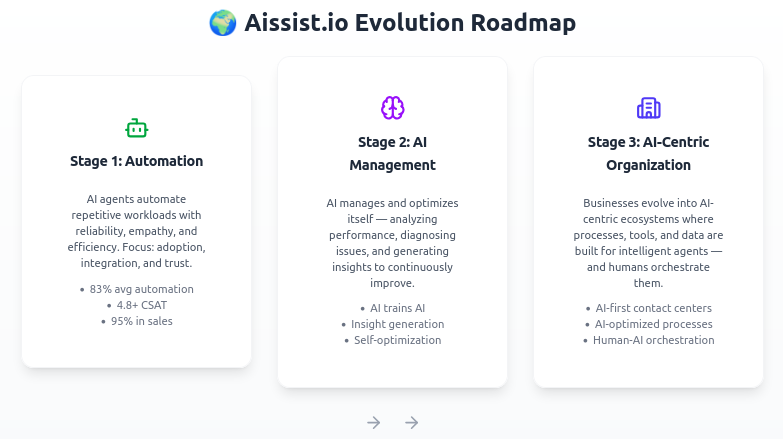
Stage 1 — Automation: Building the Foundation
Every revolution begins with small, tangible wins.
Our first milestone was automation — helping businesses offload repetitive workloads to AI that can act reliably and empathetically. The focus of this stage was adoption: making AI easy to deploy, easy to integrate, and easy to trust.
Proven Performance and Adoption
In just 18 months, Aissist.io achieved what once seemed impossible:
- 83% average resolution rate (far above industry’s 40-50% ceiling)
- 4.8+ CSAT, proving reliability and user satisfaction
- 95% automation in sales workflows, reaching human parity
- Full multimedia support: text, image, video, and now voice
- Omnichannel reach: WhatsApp, Email, SMS, Chat, Social, and beyond
Additionally, we built a true "Agentic AI" that accomplishes nearly all tasks that done by human. Those tasks include tagging, responding, escalating, summarizing, analyzing and updating systems, etc. The list of tasks are continuously expanding, some are beyond the capability of human. For example, we recently launched an Alpha version of "diagnosis" which can take in hundreds of conversation and discover insights on issues and patterns, within seconds.
When many of our enterprise customers reported that AI had reached or even surpassed human performance — not just in quality but also in cost efficiency — we knew a tipping point had arrived. That was the moment automation evolved into transformation.
The Core Philosophy — “No Flows. No Trees. No Rules. No Code.”
Behind this success lies one unshakable principle: "No Flows. No Trees. No Rules. No Code."
Where others built rigid “flow-type” bots, we built instruction-based agents — flexible, evolving, self-learning. While flows give a comforting illusion of control, they scale poorly in the real world. Our agents think, reason, and adapt — like digital employees who never sleep, never forget, and never stop improving.
There has been temptations to build a “flow type” of agent builder, which is visually pleasurable at first glance. While traditional “flow-type” agent designs rely on predefined paths, decision trees, and hard-coded rules, they inevitably collapse under the weight of complexity. Every new scenario requires another branch, another exception, another patch — until the system becomes a maze of logic that’s impossible to maintain. Real conversations and business processes, however, are not linear; they are fluid, contextual, and unpredictable. That’s why we chose a different path. Our instruction-based, reasoning-driven agents are built to understand intent, adapt in real time, and learn continuously, rather than just follow a script. This approach mirrors how humans think — flexible, contextual, and creative — allowing our AI to handle ambiguity, nuance, and edge cases at scale. The result is not only higher automation and accuracy but also a system that evolves with the business instead of breaking every time it changes.
More importantly, I have built a flow-type agent builder 10 years go. I want to move forward, not backward.
Strategic Limitation for Strategic Adoption
Today, our product still operates within existing agent platforms — Intercom, Zendesk, Salesforce, Kustomer, Gorgias, Freshdesk, and others. This was a strategic choice to accelerate adoption and integrate seamlessly with enterprise ecosystems.
However, this approach also imposes limits. These legacy systems were built for human workflows, not for AI-native collaboration. We see this as a transitional phase — a necessary step before entering the next evolution, where the platforms themselves are reimagined for AI.
Stage 2 — AI Management: From Operation to Optimization
Once automation is achieved, businesses face a new question: How can AI not only execute tasks but learn, diagnose, and improve itself — and extend its reach across the entire organization?
This is where AI Management begins — the bridge between operation and orchestration.
In this stage, AI evolves from a worker to a manager of intelligence — overseeing, optimizing, and connecting every intelligent process into one coherent ecosystem.
From Execution to Awareness
AI Management means building awareness into the system. Each digital employee not only performs its task but also measures how well it performed, why certain results occurred, and how they could be improved next time. The AI no longer just follows instructions — it reflects, evaluates, and adjusts.
This creates a living network of self-optimizing intelligence, where performance metrics, user satisfaction, and business outcomes form a continuous feedback loop. The system learns not from isolated queries but from the collective intelligence of every interaction — across time, departments, and functions.
Extending the Reach of AI — Breaking the Silo
One of the most powerful outcomes of AI Management is its ability to extend the reach of AI beyond departmental boundaries. In traditional organizations, automation lives in silos — support, sales, logistics, finance — each running its own isolated system. But under AI Management, those boundaries begin to dissolve.
AI becomes a shared connective fabric, linking tools, workflows, and data across the enterprise. It sees the full picture: how a delayed shipment affects customer satisfaction, how service trends influence sales, or how marketing signals can predict churn.
By connecting the dots between systems, AI breaks the data silos that have long constrained decision-making — turning scattered insights into a single stream of intelligence that flows through the entire business.
In doing so, AI doesn’t just automate isolated tasks; it elevates organizational thinking, enabling the company to act as one intelligent, synchronized organism.
AI That Builds and Trains AI
With AI Management, the system begins to train itself — not through manual prompts or human retraining, but through self-directed learning.
Imagine an environment where AI autonomously:
- Diagnoses declining response quality and retrains its own models,
- Detects new patterns of behavior and adapts strategies accordingly,
- Experiments safely within policy constraints and reports measurable improvements.
This is meta-intelligence — AI supervising and improving AI — transforming every process into an evolving, learning organism.
The AI Manager as a Strategic Partner
At this stage, AI Management becomes a strategic layer — not just monitoring automation but uncovering insights that shape business direction.
It identifies inefficiencies, anticipates customer needs, and even forecasts where the next opportunity lies. Think of it as an AI COO — quietly orchestrating performance across the digital workforce, guiding both human and AI employees toward peak collaboration, foresight, and innovation.
Stage 3 — The AI-Centric Organization
The final evolution is not just technological — it’s organizational.
Stage 3 represents a complete shift from human-centric to AI-centric architecture, where AI becomes the core operating system of the enterprise.
In an AI-centric organization, humans don’t disappear — they ascend. They move from executing repetitive tasks to defining goals, ethics, and creativity. AI, in turn, executes, optimizes, and scales.
The AI as the Center of Gravity
In traditional organizations, people are at the center, and systems orbit around them.
In an AI-centric organization, this structure inverts: AI becomes the nucleus — the connective tissue through which all data, processes, and decisions flow.
Every system, tool, and dataset integrates directly with AI — forming a unified intelligence layer that understands context, predicts outcomes, and orchestrates execution across departments.
Finance, sales, support, and product are no longer siloed; they become interconnected neural nodes within a single intelligent organism.
The Enterprise That Thinks
An AI-centric enterprise is not reactive but proactive — constantly sensing change and adapting.
When market conditions shift, the AI doesn’t wait for reports; it detects patterns, rebalances workloads, and even recommends strategy pivots.
It acts as both memory and consciousness for the organization — continuously learning from history while anticipating the future.
Human + AI: The Hybrid Team
In this world, humans and AI work symbiotically.
- Humans define direction, creativity, empathy, and governance.
- AI executes, reasons, and scales those visions across thousands of operations per second.
- Leaders no longer ask “What can AI automate?” but “What can humans imagine when AI takes care of the rest?”
The New Org Design
The AI-centric enterprise will birth a new kind of organizational design: Departments become AI-enabled pods, collaborating through shared intelligence.
Managers evolve into AI strategists who oversee outcomes, not microtasks. KPIs shift from “hours worked” to “insights generated” and “impact delivered.” The result is an organization that doesn’t just run faster — it thinks smarter.
An enterprise that doesn’t just react to change — it creates change.
The Future We’re Building Toward
Aissist.io is not just building software. We are building the infrastructure of the AI-first enterprise — a future where:
- Every business process is intelligently automated.
- Every decision is data-driven and AI-enhanced.
- Every team is amplified by its digital counterparts.
We call this the journey from Automation to Transformation.
In this world, AI is not a replacement for humans — it’s a new class of teammate. A partner that executes, learns, reasons, and evolves — allowing humans to focus on what only humans can do: imagination, empathy, strategy, and creation.
That is the world we are shaping. That is the mission of Aissist.io. And that is the story of how Agentic AI becomes not just a technology — but a new way of working, a new way of thinking, and a new way of building the future.

